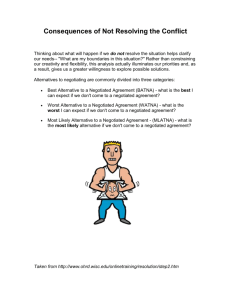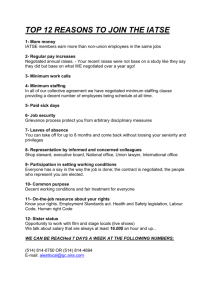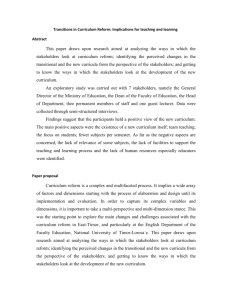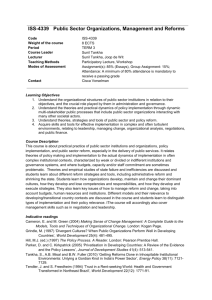P&B, Chapter 20: Models of reform
advertisement
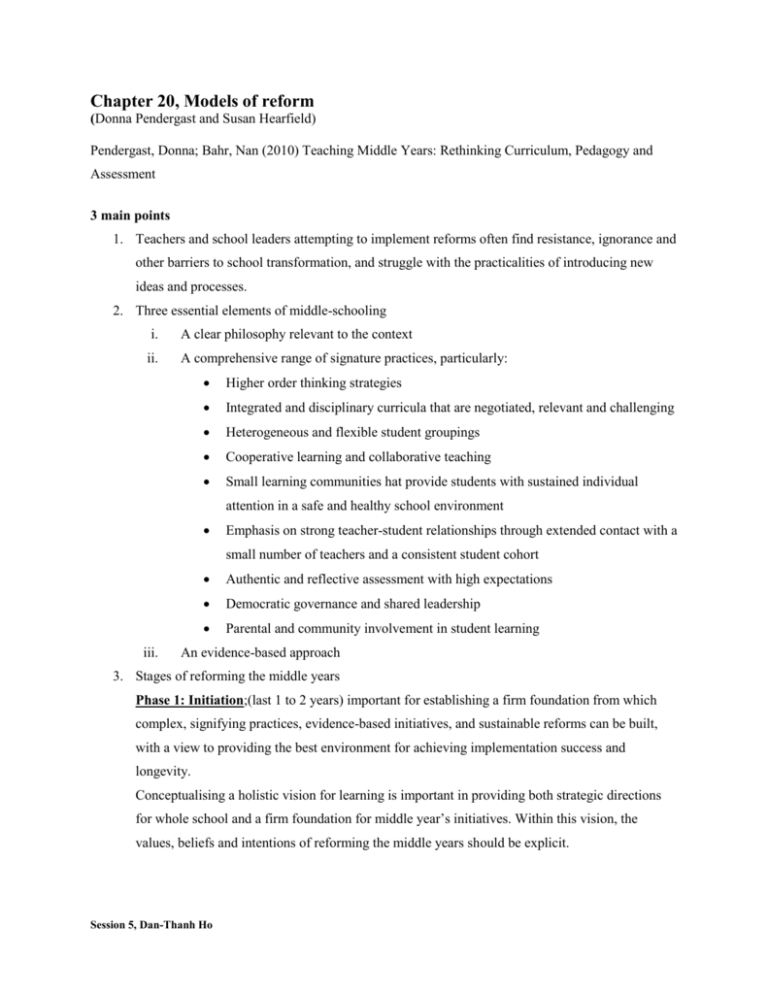
Chapter 20, Models of reform (Donna Pendergast and Susan Hearfield) Pendergast, Donna; Bahr, Nan (2010) Teaching Middle Years: Rethinking Curriculum, Pedagogy and Assessment 3 main points 1. Teachers and school leaders attempting to implement reforms often find resistance, ignorance and other barriers to school transformation, and struggle with the practicalities of introducing new ideas and processes. 2. Three essential elements of middle-schooling i. A clear philosophy relevant to the context ii. A comprehensive range of signature practices, particularly: Higher order thinking strategies Integrated and disciplinary curricula that are negotiated, relevant and challenging Heterogeneous and flexible student groupings Cooperative learning and collaborative teaching Small learning communities hat provide students with sustained individual attention in a safe and healthy school environment Emphasis on strong teacher-student relationships through extended contact with a small number of teachers and a consistent student cohort iii. Authentic and reflective assessment with high expectations Democratic governance and shared leadership Parental and community involvement in student learning An evidence-based approach 3. Stages of reforming the middle years Phase 1: Initiation;(last 1 to 2 years) important for establishing a firm foundation from which complex, signifying practices, evidence-based initiatives, and sustainable reforms can be built, with a view to providing the best environment for achieving implementation success and longevity. Conceptualising a holistic vision for learning is important in providing both strategic directions for whole school and a firm foundation for middle year’s initiatives. Within this vision, the values, beliefs and intentions of reforming the middle years should be explicit. Session 5, Dan-Thanh Ho Phase 2: Development; ( lasts 2 to 5 years) once the foundation in phase 1 are in place, including a clear philosophy, teacher teams, innovative leadership and effective transitions, moving to complex areas of reform is now possible. Areas such as negotiated curriculum, integration, focusing on intellectual demand and putting in place sustainable evidence-based processes. Phase 3: Consolidation; (a further 5 to 10 years) after phase2 have been implemented, there is an opportunity to reflect and refine, drawing on the evidence-based outcomes. Revisiting the philosophical base, as well as facilitating diversity to get a greater degree, is the broad aim of this phase. Something extra: “If teachers are not developing as learners themselves, they will be limited role models for students attempting to become lifelong learners”. Two implications 1. Make relevant connections for students between theoretical underpinnings and real lifeexperiences, and maximise experimental learning. “Learners in the middle years respond to a curriculum that is relevant, integrated and negotiated”. 2. “Student engagement, a motivator for learning, and student disengagement, an alienation from learning”. To increase student engagement is through negotiation of the curriculum, as well as assessment and pedagogical practices-the how, what and why of learning. (on page 371, table 20.2 illustrates the relationship between student voice, democratic processes and negotiated curriculum) Question 1. The three-phase model for middle school reform highlights the time taken for effective reform to take place, yet with changes to governments, policies, staff and day-to-day priorities, the agenda is often blurred. What changes to these and other systematic factors would provide the best case to enable middle-schooling reform? Why are middle years students worth it? Session 5, Dan-Thanh Ho



